Tasmania Countryside, Sport & Adventure
Taking in the beauty of Tasmania from its wild waterways
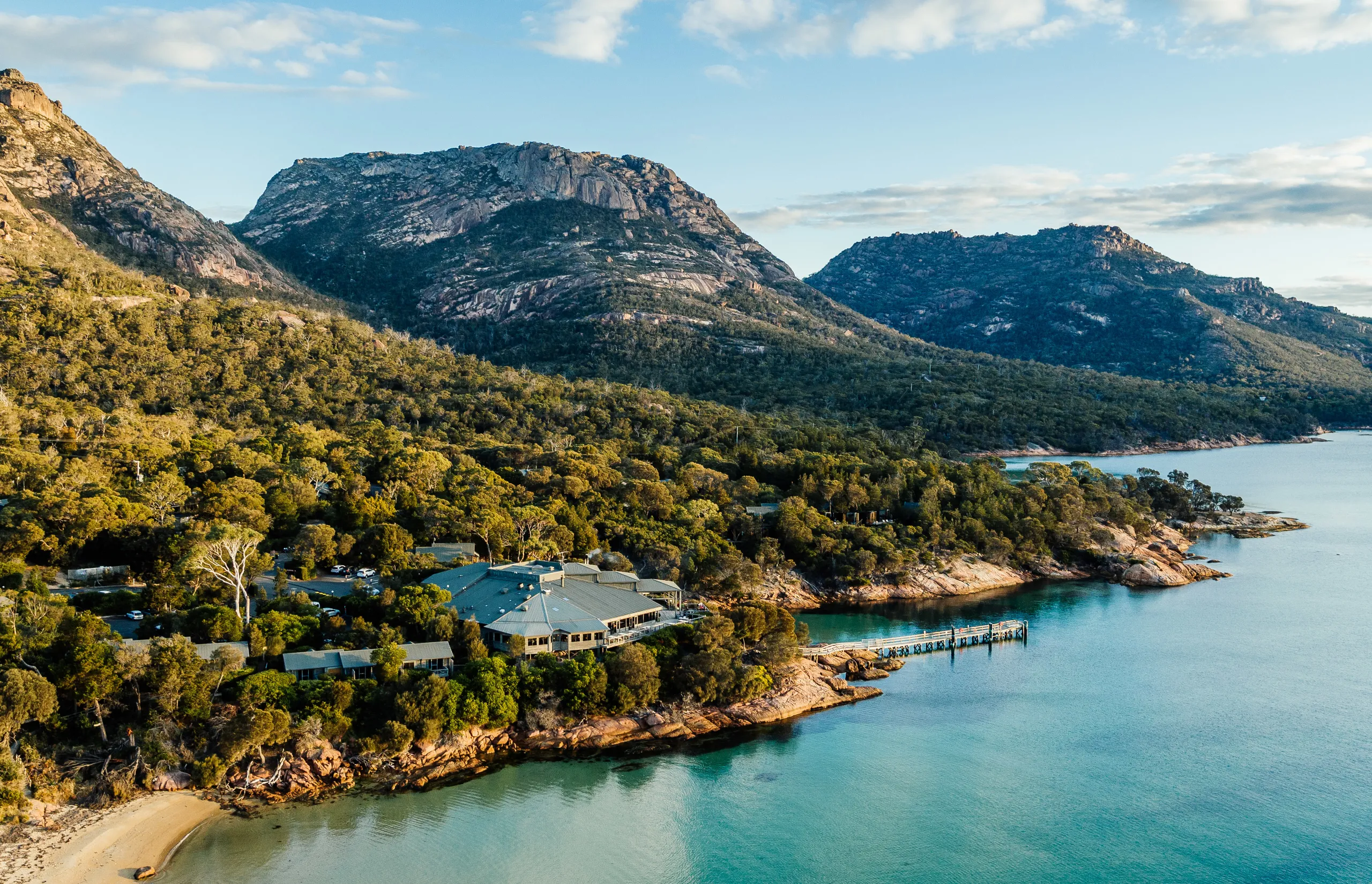
Freycinet Lodge, Tasmania
With its myriad ancient, tannin-filled rivers and ruggedly handsome coastline, Tasmania is a land that might just be best appreciated from the water
A greater percentage of Tasmania lies within ten minutes of a Gondwana-like river or gnarled and battered coastline than any other state in the country. I didn’t know this, though it stands to reason given its size. No wonder, then, that despite my best intentions to spend my time in The Apple Isle walking its forest trails, I always seem to end up on a boat. Water defines Australia’s southernmost state, and there are views, which prove too seductive to ignore, that you can only get when floating upon on it.
Take Strahan and the west country, for example. Once one of the state’s busiest ports, it straddles the shoreline of Macquarie Harbour, a shallow 315 square-kilometre fjord. It maintains a restored and impressive array of historic trains that connect it to the old mining town of Queenstown through the once treacherous King River Gorge. Inland, there is an array of thrilling adventures – all of them firmly land-based – there for the taking, including the mist-shrouded mountains of the “Western Wilds”: 1.5 million hectares of gorgeous wilderness.
Naturally, I end up on a boat.
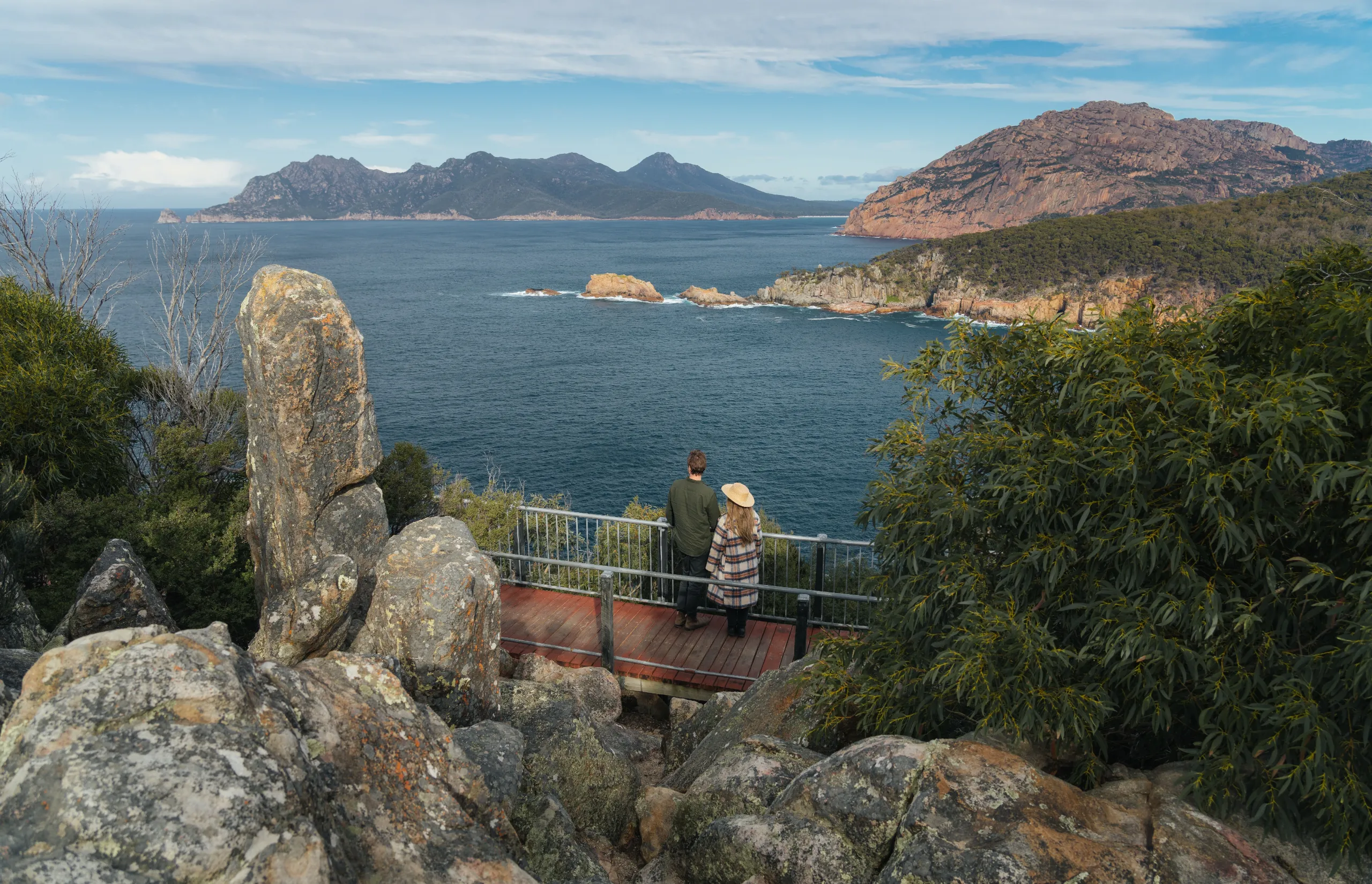
A wild spirit
The Gordon River runs through the UNESCO Tasmanian Wilderness World Heritage Area, descending more than half a kilometre over its 170 kilometre-plus course from its source in the central highlands before entering Macquarie Harbour, not far from Strahan at Wrights Bay.
Gordon River Cruises’ purpose-built, whisper-quiet catamaran Spirit of the Wild takes me up its dark, tannin-filled waters – a river with such a primeval feel to it I can’t help but think of Joseph Conrad’s great 1899 novella, ‘Heart of Darkness’, the hypnotic story of one man’s journey up the then-unmapped Congo River in colonial-era Africa. Tree species that are shrubs in eastern Tasmania grow as trees here, the encroaching forest a mosaic of eucalypts, Huon pine, sedges, and buttongrass. This is nature at its purest, completely undisturbed by humans. River fog is common on the Gordon and I can’t help but think the more inclement the weather the more exhilarating and Congo-like the journey surely will be, lamenting the sunny day we just had.
Spirit of the Wild’s five star experience makes it a perfect day out. It has a main lower deck, which is perfectly comfortable, but it’s worth going the extra mile and booking its Premium Upper Deck. There I experience a world of leather-stitched chairs, a private viewing area and a buffet lunch to remember including oven baked coconut & kaffir lime chicken, Macquarie Harbour smoked salmon with pickled red onions and capers, Asian dishes, pastrami, salamis and all the Tasmanian wine and cheese you can consume.
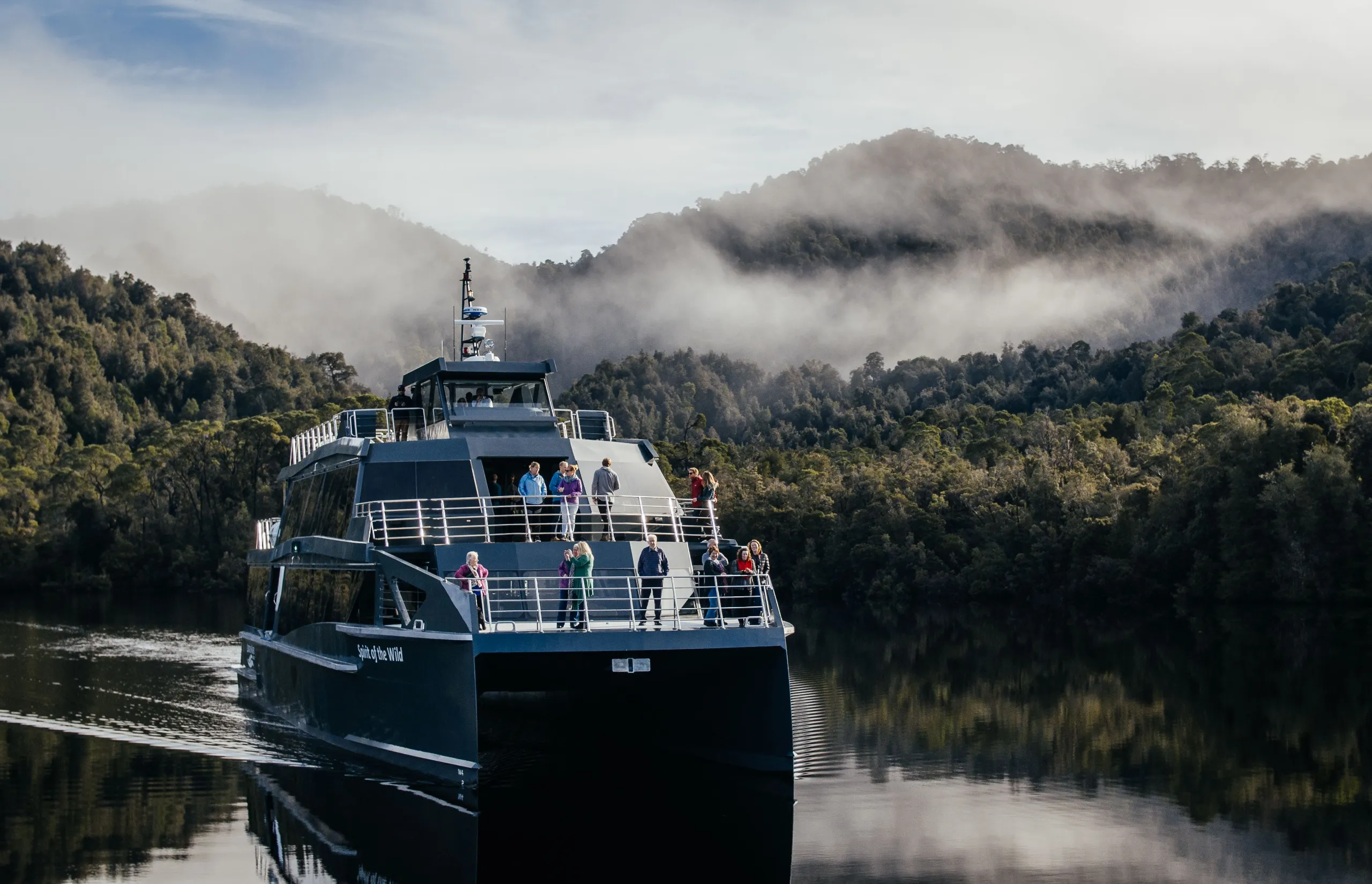
An unsung hero
Over on the east coast a couple of days later, Tasmania’s waterways lure me in once again. Have you ever been to a concert where the only thing you talk about afterwards is how good the support act was? Or the theatre, where the understudy had to replace the lead much to everyone’s disappointment, only to give a bravo performance that brings down the house?
That’s what Ile des Phoques was to Maria Island for me. Not a support act, not an understudy, Ile des Phoques – the Island of Seals – is what most people who visit Maria Island never get to see.
This needs to change.
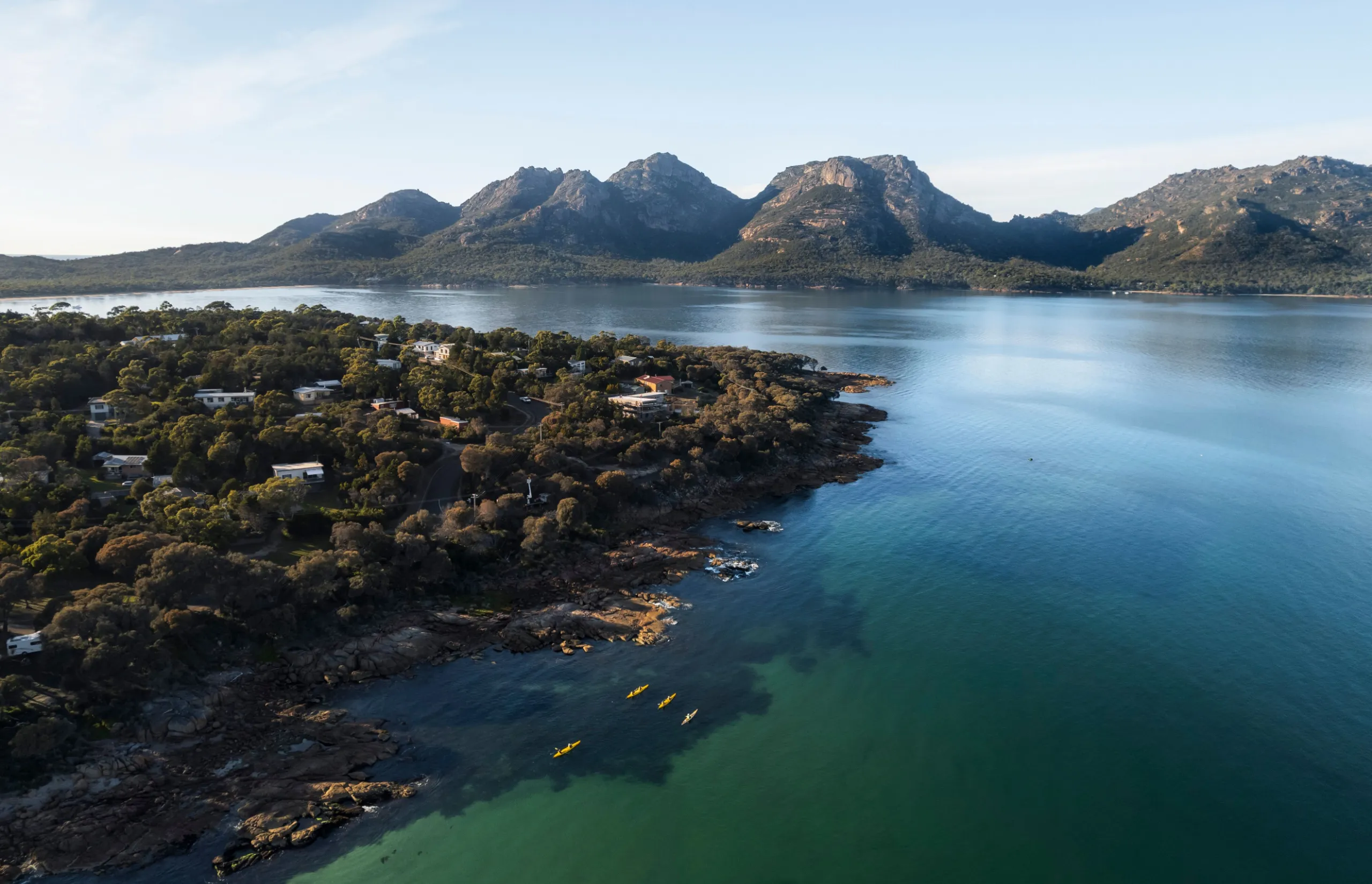
It’s small – just eight hectares, and lies 18.5 kilometres to the north of Maria Island within sight of the Freycinet Peninsula. A daily ferry runs back and forth to Maria Island from the port town of Triabunna and people come from around the world to walk through its convict-era settlement of Darlington, get up close to its Cape Barren geese, and of course to see its wombats, the original 20 or 30 of which were taken there from Flinders Island in the 1960s. Now numbering in the thousands, they’re jokingly referred to as ‘trip hazards’.
Maria Island is a well-established jewel in Tasmania’s tourism crown. But if you want to see Ile des Phoques, and you should, then you’ll need to ditch the ferry, and find a guy named Mike.
Mike Davis owns East Coast Cruises, and for the past 18 years has been the sole operator to Ile des Phoques. This granite-laden island has cliffs as high as 50 metres, sea caves of outstanding natural beauty, and is a popular haul-out for Australian fur seals. The island was proclaimed a Nature Reserve to protect them, and they’re here in their hundreds now. But that’s not what makes these seals so remarkable.
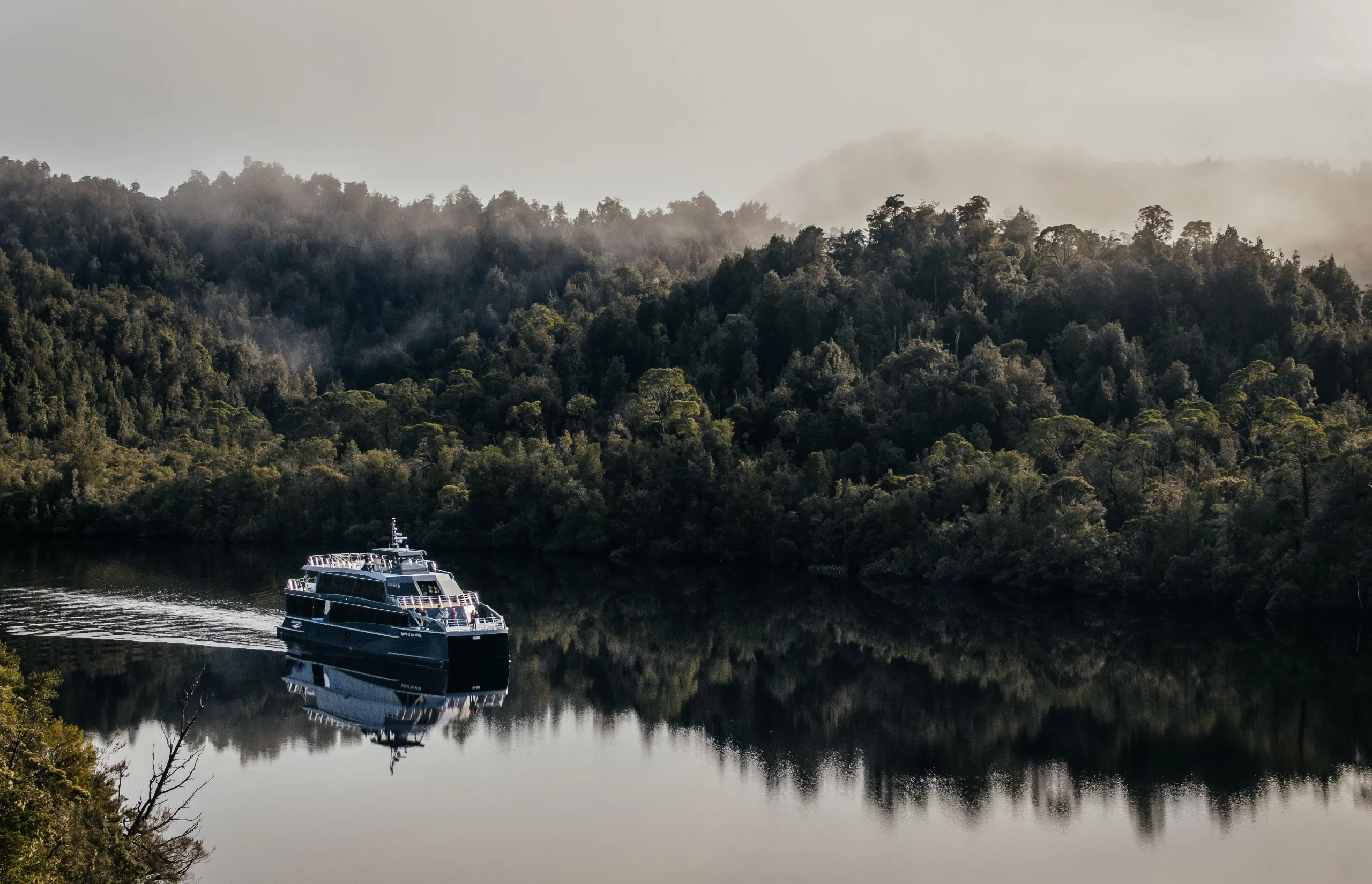
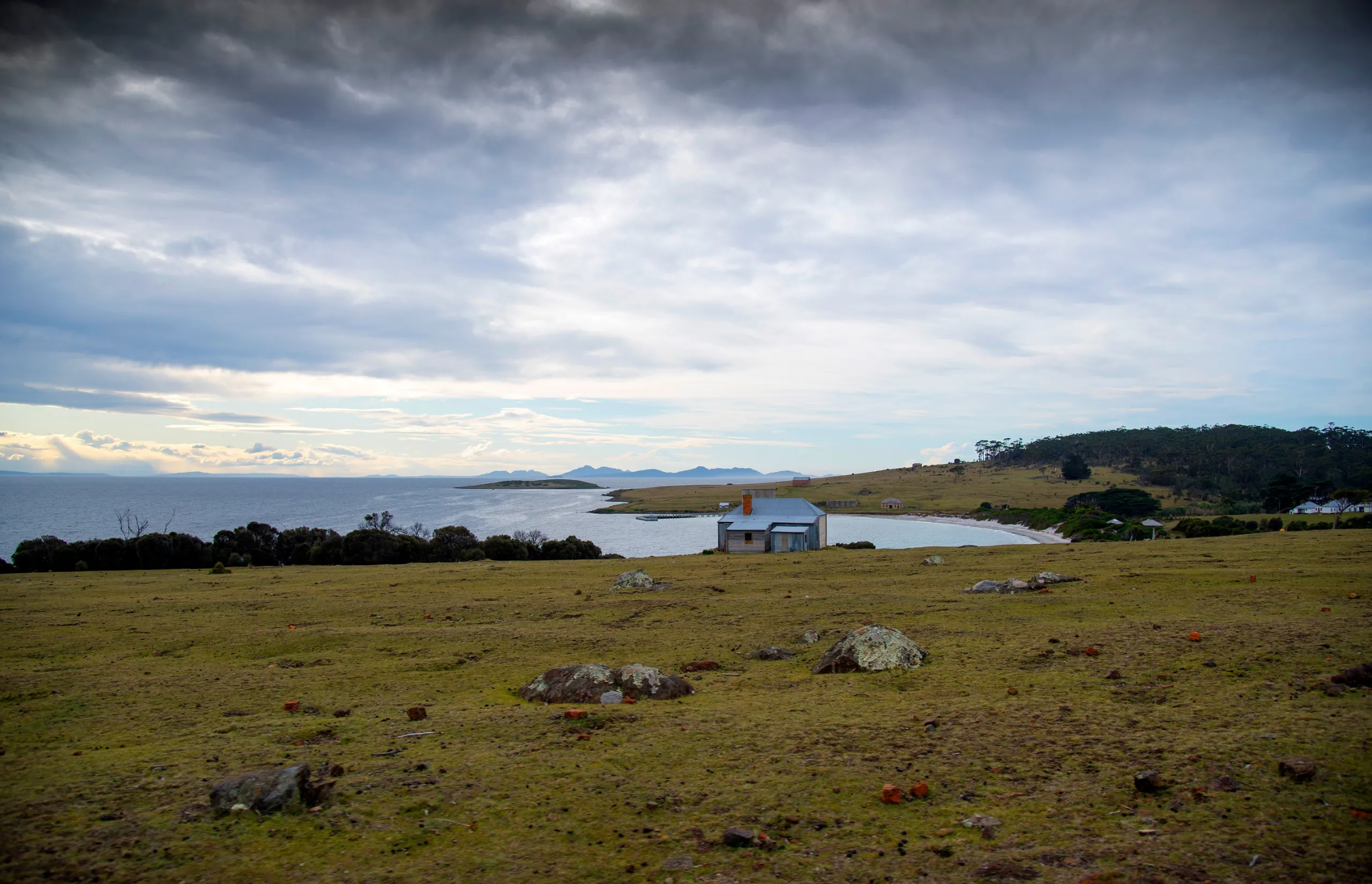
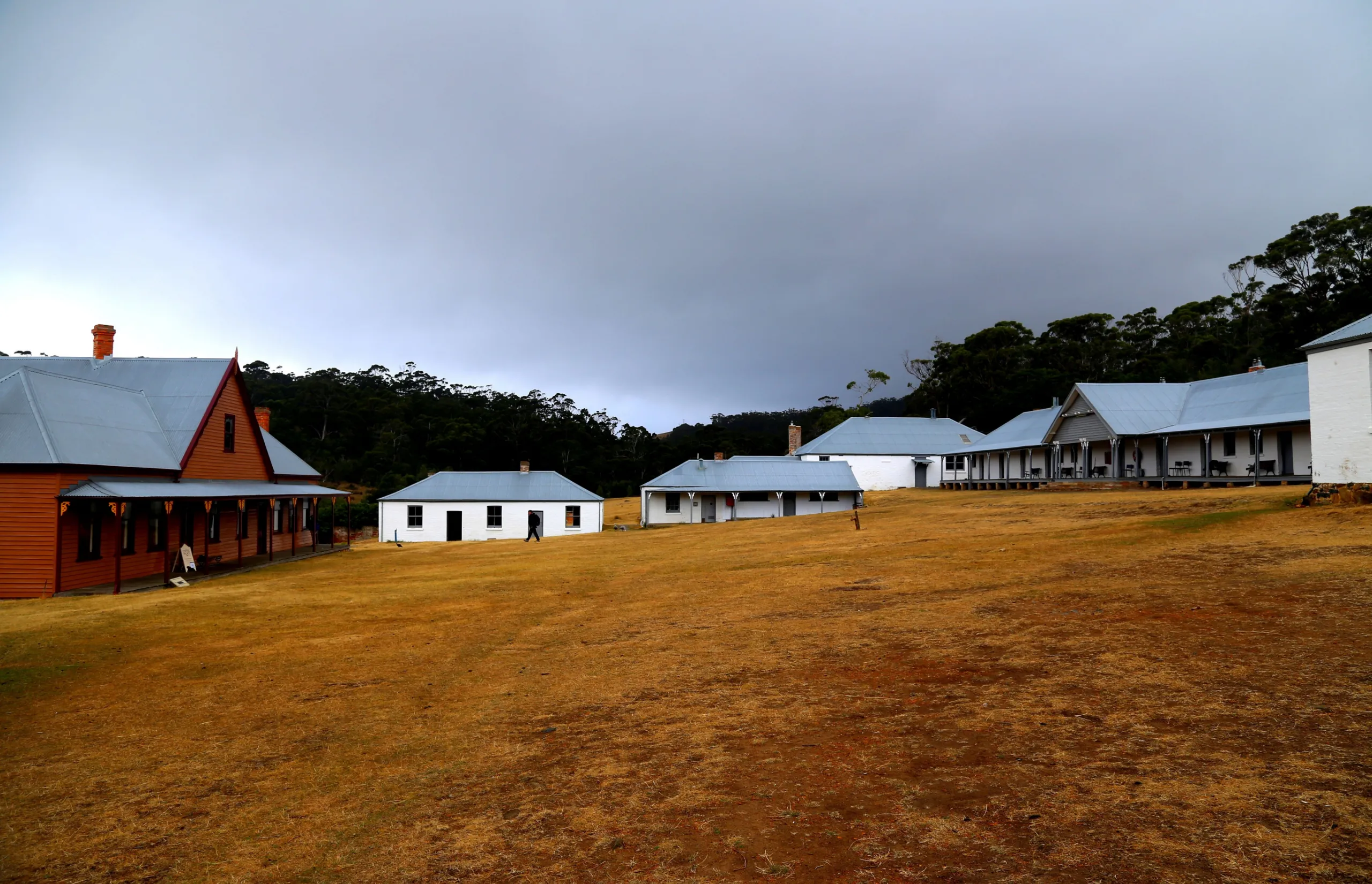
Two hundred years of Europeans mercilessly hunting seals for their fur, meat and blubber not only decimated seal populations across Australia, it drastically altered their behaviour and interfered with breeding habits. Seals became wary of boats, developed observable anxieties, and passed this down to their offspring.
A couple of summers ago on Ile des Phoques a visiting marine biologist, to her unbridled joy, noticed the seals there were beginning to behave… normally. They’d learned not to feel threatened by Mike’s boat, the Spirit of Maria. It was a return to normality she’d not witnessed anywhere else, and the observation, Mike told me, made her cry. It’s taken generations, but at Ile des Phoques seal behaviour is returning to its pre-colonial norms. The seals are now breeding in increasing numbers, so much so that their designation may soon change from “haul-out” (non-breeding group) to “colony”(breeding). It’s a very big deal.
Then there are its sea caves, caves so large that the Spirit of Maria can take you deep inside them if the swell allows. Some form tunnels that traverse the entire island, their rocks layered with outrageous streaks of colourful algae. Locals call them the “Rainbow Caves”.
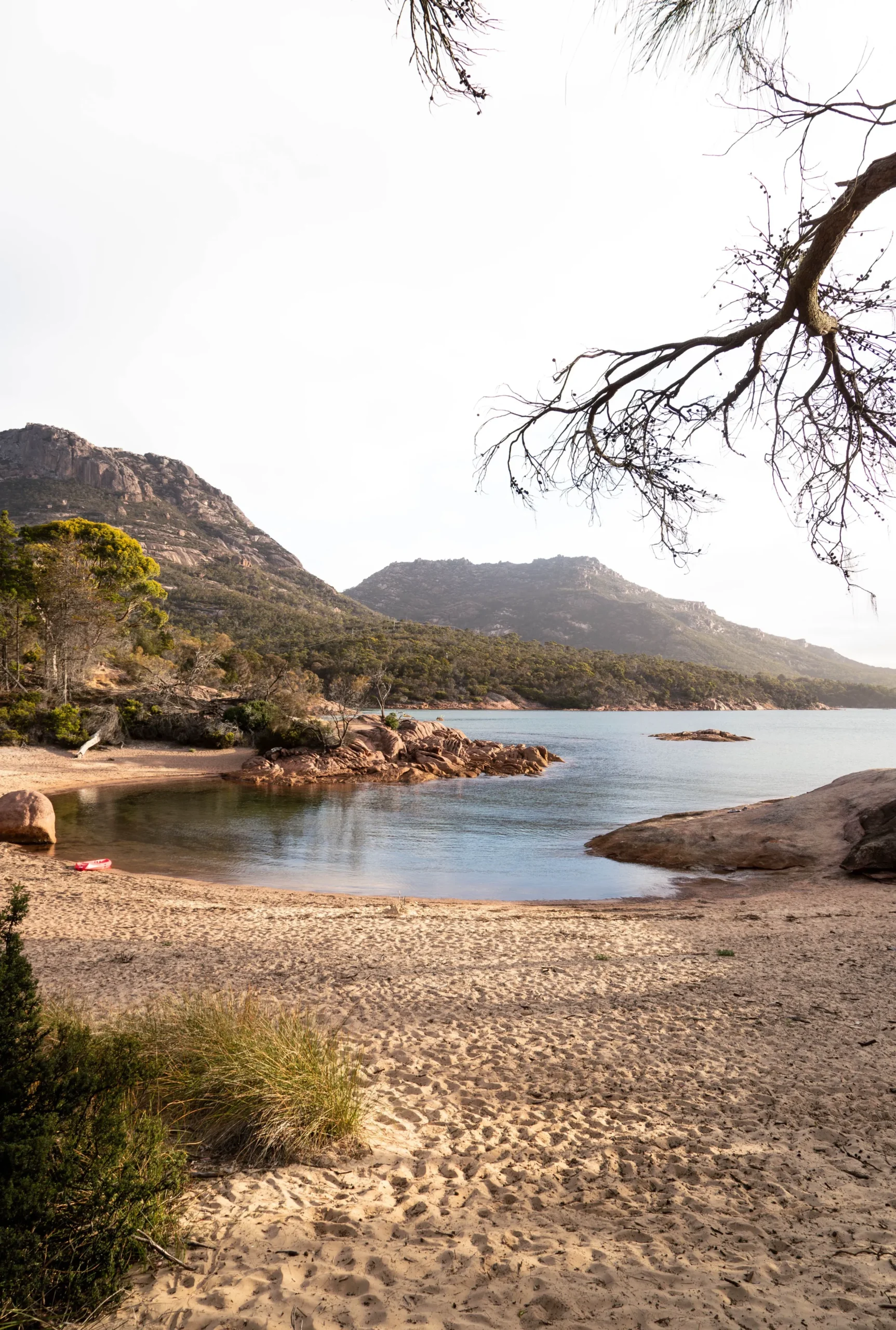
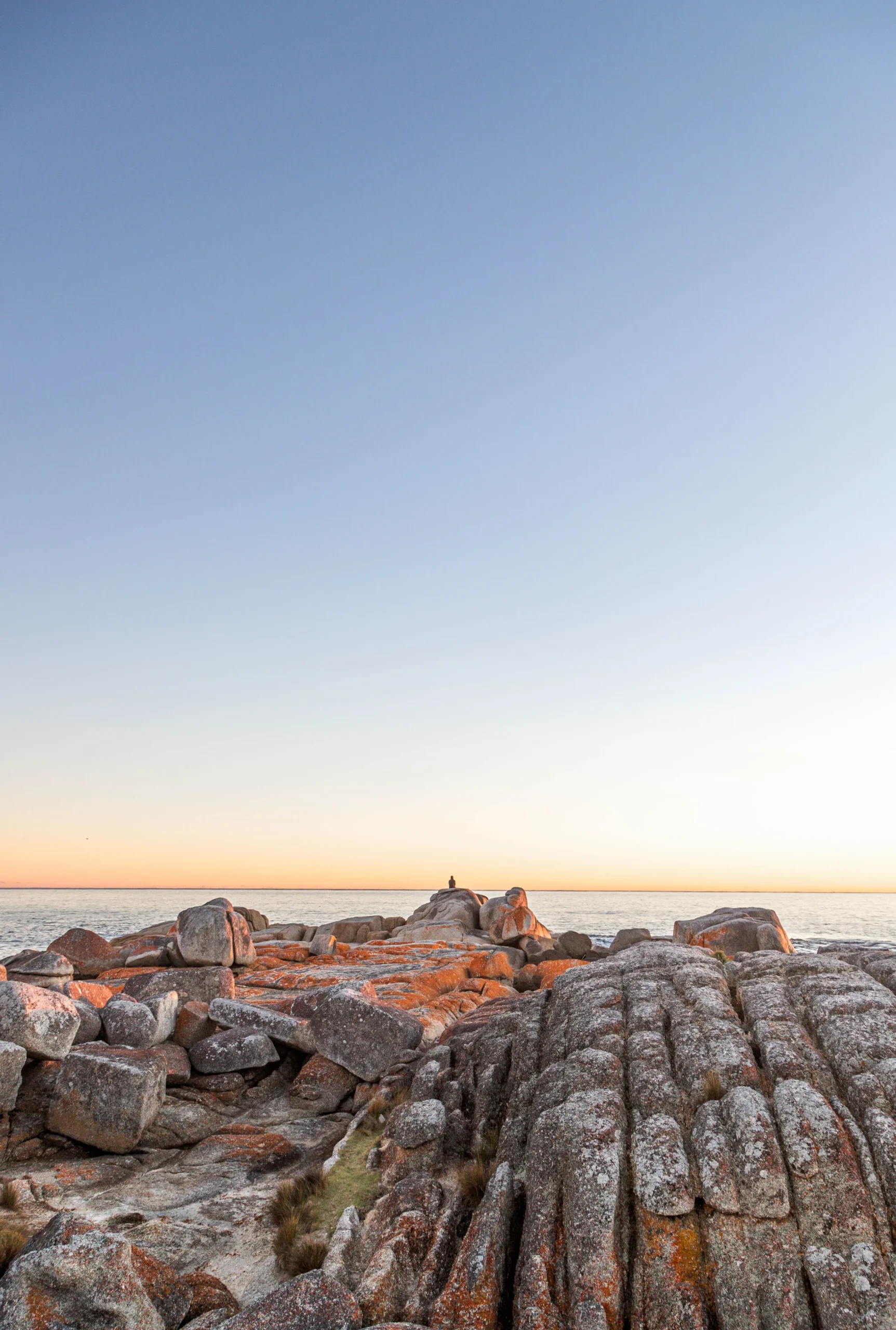
A geologist’s Disneyland
Maria Island, of course, is no slouch. Its Fossil Cliffs on its east coast comprise extraordinary sequences of limestone, siltstone and mudstone, a site so rare and containing such an abundance of fossils that Sir David Attenborough came here to see it for himself. Its Painted Cliffs on its west coast have riotous bands of red, orange and yellow iron-oxide stained sandstone that have to be seen to be believed.
Oh and if all that weren’t enough, it’s also home to a “Great Unconformity”. A geologic term, unconformities are where rock strata are upended, upside-down – and they are exceedingly rare. Instead of younger layers pushing up from below which is the norm, they can be seen on top of far older intrusions. Several examples can be seen in the Grand Canyon, and on the east coast of Scotland.
Sounds a bit textbook, right? That’s what’s so great about it. The absurd upside-down layering of the conglomerates that you can really only properly appreciate as you bob about offshore in the Spirit of Maria are analysed and talked about in scientific papers the world over.
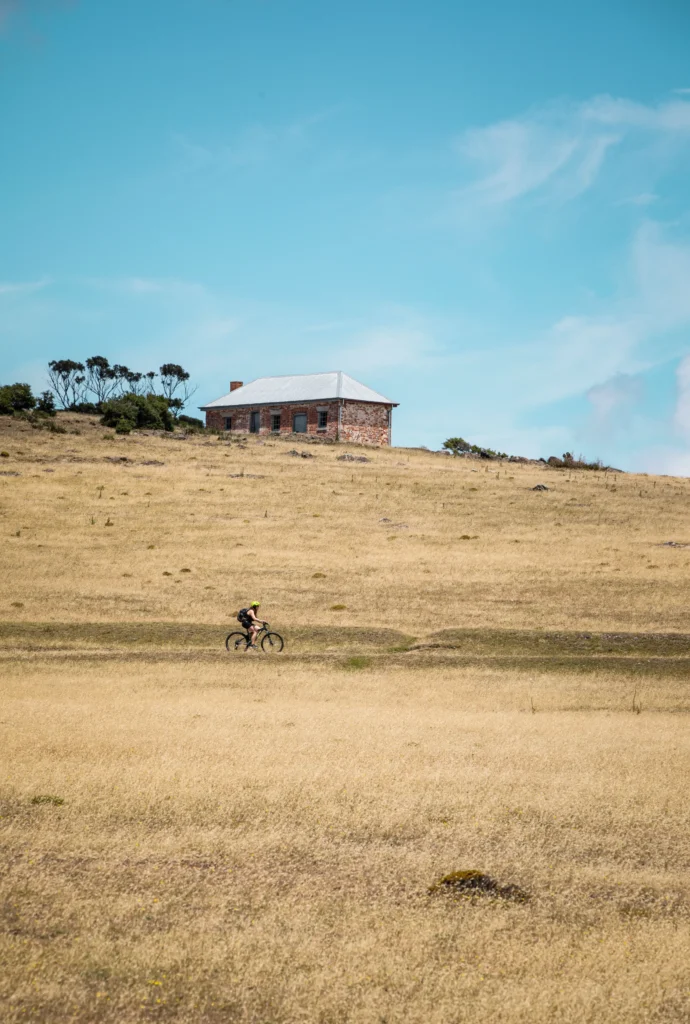
Maria Island is a geologist’s Disneyland. Marine biologists, geologists, BBC presenters, history buffs, fossil hunters. Maria Island has something for everyone, and the more you’re willing to learn, the more overwhelmed you are by it. There’s so much more here than just convicts and wombats.
Even amidst the convict ruins at Port Arthur it’s still all-but impossible to stay off the water. Pennicott Wilderness Journeys can take you around the Tasman Peninsula between Port Arthur and Eaglehawk Neck on a 3-hour thrill ride past Tasman Island and the Southern Hemisphere’s highest sea cliffs at Cape Pillar, a bumpy ride in often large swells clad in waterproof jackets in a covered 12.5-metre purpose-built speedboat powered by three low-emission outboards.
Come here from May through July or September through November for the annual migration of humpback whales, but it’s a kaleidoscope of wildlife at any time: gannets, albatross, sea eagles, shearwaters, dolphins and fur seals against a backdrop of towering cliffs, sea stacks and caves.
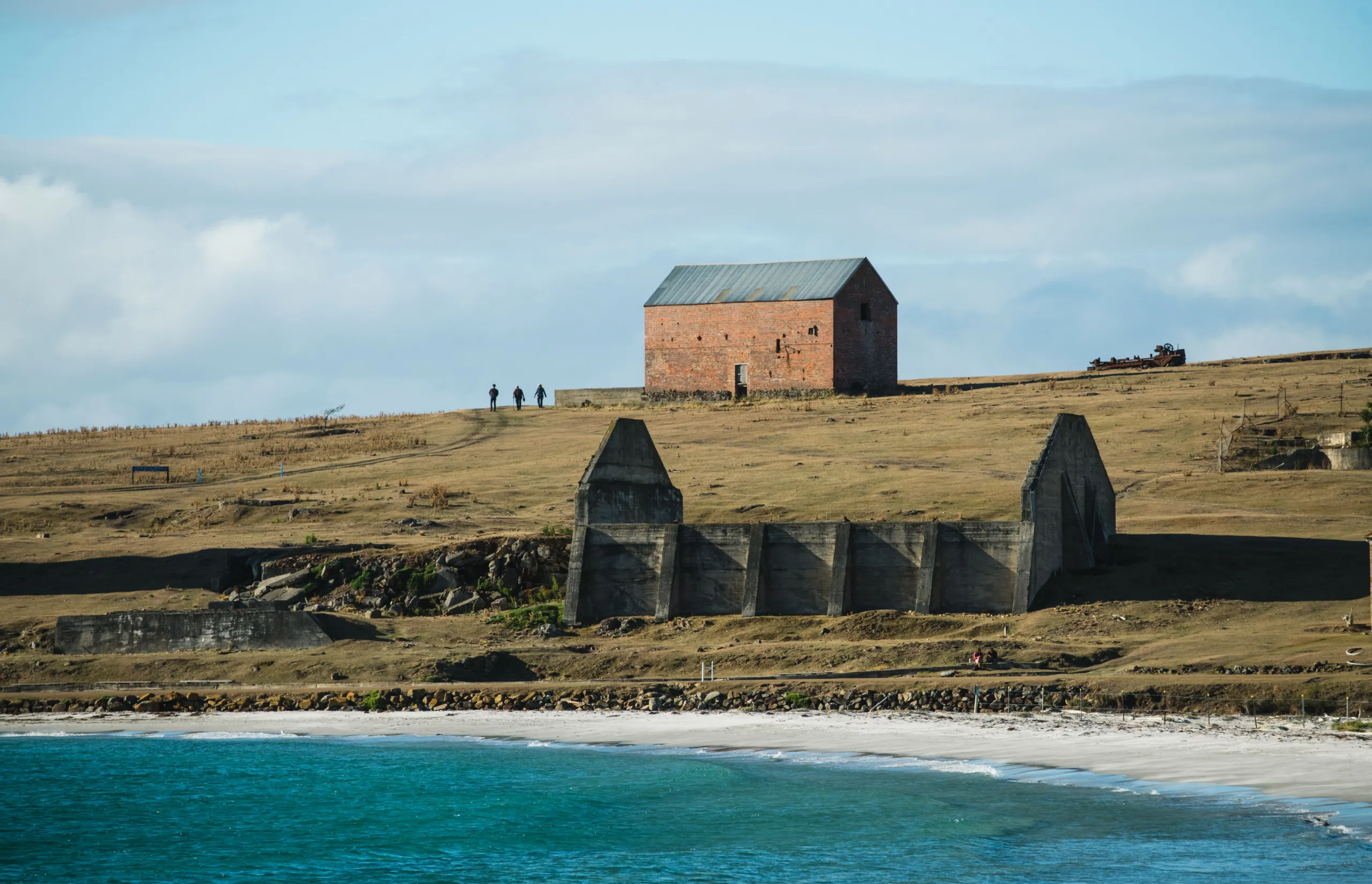
There’s an old sailor’s saying: “Below 40 degrees [of latitude] there is no law.” Tasmania, at 40 degrees south, still has embedded within it this feeling of lawlessness, of wildness because of the unbroken ocean to its west, and the buffeting it brings. Everything here has adapted or been altered by it – from peat-rich moorlands of buttongrass to the reproductive habits of its fauna to the eroded nooks and tantalising unconformities of a jumbled, conglomerate-strewn coastline.
This is a land best understood, perhaps, when experienced from its ancient, tannin-filled rivers, and while bobbing about in the waters of the Southern Ocean.
The ocean that shaped it.
Latest Articles
Don't miss the latest from Luxury Travel
